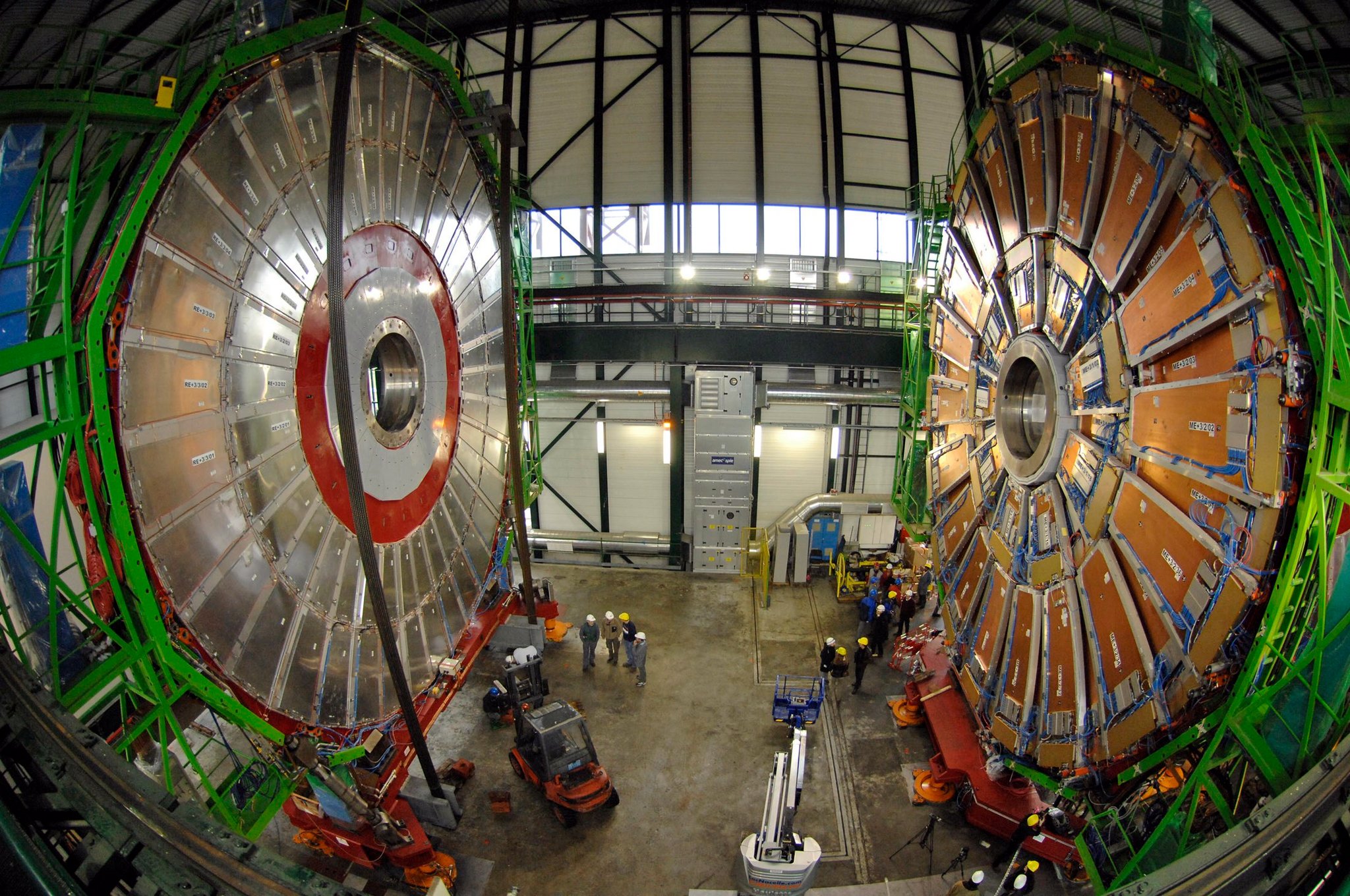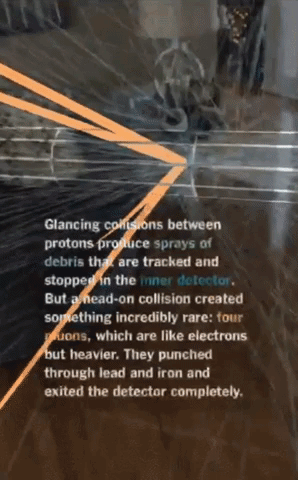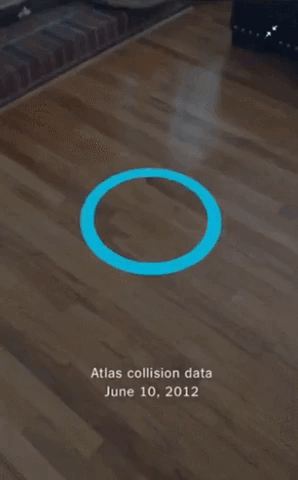NYT app simulates a Higgs particle reaction using AR technology.
Since its initial development during the mid 1960’s, the Large Hadron Collider has remained one of the most impressive scientific and technological achievements in human history. A unique microscope device featuring a 17-mile electromagnetic racetrack located roughly 164 to 574 ft below the surface of the French-Swiss countryside in Geneva, Switzerland, the revolutionary machine is capable of whipping subatomic particles into one another at a rate of 600 million times per second.
Researchers can then sift through the aftermath of the high-speed collisions for potentially undiscovered particles. The device has also been instrumental in helping paint a clearer picture of the other events surrounding what was the initial birth of the universe, a.k.a the Big Bang, thanks to the long-awaited discovery of Higgs Boson. Otherwise known as the “God Particle,” the mysterious element has helped shed light on the existence of mass, diversity and life in the universe. The research was so significant it earned François Englert and Peter W. Higgs the 2013 Nobel Prize in Physics.

Image Credit: The New York Times
To help celebrate the impressive progress achieved with the help of the Large Hadron Collider, The New York Times has released an extensive interactive breakdown of the colliding process highlighting the scientific importance of this bleeding-edge technology. Accompanying this breakdown is a free interactive augmented reality simulation of one of the particle collisions that helped contribute to the eventual discovery of the God Particle. Available via The New York Times app, the AR experience was built on ARKit and ARCore using Atlas data from that infamous June, 2012 collision.

Image Credit: The New York Times
Image Credit: Tommy Palladino / Next RealityUpon activating the experience, users can watch as their real world environment becomes the focus point of a life-size particle collision nearly identical to the ones responsible for the Higgs Boson discovery. As the particles make their way through the collider, glancing collisions result in sprays of debris, represented as glowing lines which scatter and expand before being halted by the inner detector.
A rare head-on collision, however, produced four muons; heavier forms of electrons so powerful they punctured the lead and iron of the collider, escaping the device completely.
Users can witness history themselves via the New York Times app or by visiting here and scanning the QR code located near the header.

Image Credit: Tommy Palladino / Next Reality
For even more insight, readers can view an interactive article entitled “It’s Intermission for the Large Hadron Collider” via The New York Times website. There’s also a collection of stunning 360-degree photos, as well as a 360-degree video.
Other recent New York Times AR projects include Augmented Reality: David Bowie in Three Dimensions, an AR tour of the Statue of Liberty’s torch, as well as an educational experience that brings giant insects to life.
The post Witness The Discovery Of The God Particle In AR appeared first on VRScout.
from VRScout http://bit.ly/2GVAlY2
via IFTTT
No comments:
Post a Comment